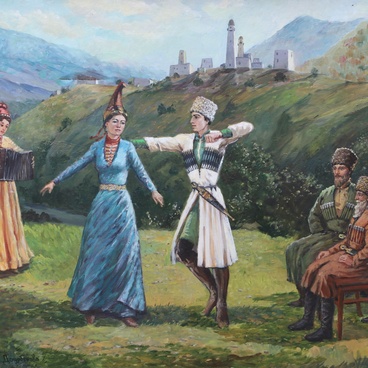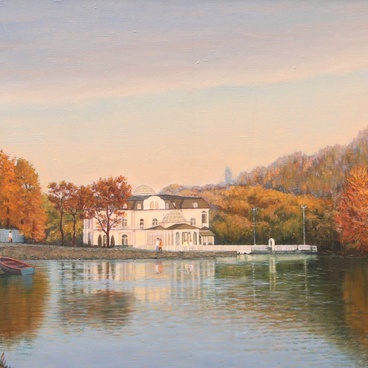In the Caucasus, the use of firearms began to spread around the 16th-17th centuries. The first firearms were mostly matchlock muskets: they were fired by applying a special match to the priming powder, for which it was required to hold the gun with one hand. It was difficult to fire them, so in the 18th century, guns with flintlock firing mechanisms replaced them. They were brought to the Caucasus from Turkey.
The Turkish flintlock was invented at the beginning of the 14th century in the countries of the Middle East. The masters inserted a sharply sharpened on one end piece of flint into the hammer. The flint strikes the frizzen against the flash pan and it creates a spark which falls into the pan and ignites the powder. Flintlock muskets were much easier to use than the matchlock ones: the hammer did not need to be held constantly at cock.
The weapon with this mechanism became known as flintlock. The caliber of such musket ranged from 17.5 to 21.5 millimeters, and the weight from 4 to 5.6 kilograms. It had a firing range when shooting at a single target of about 40 to 100 meters, when shooting at a group of objects — from 100 to 200 meters.
In general, there were two types of flintlocks: smoothbore and rifled. The firing speed for the smoothbore firearms was 2-4 rounds per minute, and for the rifled ones — only one shot per minute. The barrels were most often rifled: the barrels had grooves cut into the interior surface, which ensured a more accurate trajectory and better range.
The barrels could be round or faceted. They were usually decorated with metal notches made of precious metals. Various overlays were engraved with delicate ornaments: floral, ethnic, or geometric.
The muskets had special covers, which were made of felt or animal skins. Weapons in their covers were worn on the back attached to a belt. In addition to the cover, there also was special equipment, for example, gazyrs — special cartridges for carrying gunpowder.
However, flintlock guns frequently misfired. Usually, this was due to poorly fixed or damaged flint and frizzen, a worn-out firing pan, or a priming hole clogged with soot. In the middle of the 19th century, percussion rifles replaced such guns.
The Turkish flintlock was invented at the beginning of the 14th century in the countries of the Middle East. The masters inserted a sharply sharpened on one end piece of flint into the hammer. The flint strikes the frizzen against the flash pan and it creates a spark which falls into the pan and ignites the powder. Flintlock muskets were much easier to use than the matchlock ones: the hammer did not need to be held constantly at cock.
The weapon with this mechanism became known as flintlock. The caliber of such musket ranged from 17.5 to 21.5 millimeters, and the weight from 4 to 5.6 kilograms. It had a firing range when shooting at a single target of about 40 to 100 meters, when shooting at a group of objects — from 100 to 200 meters.
In general, there were two types of flintlocks: smoothbore and rifled. The firing speed for the smoothbore firearms was 2-4 rounds per minute, and for the rifled ones — only one shot per minute. The barrels were most often rifled: the barrels had grooves cut into the interior surface, which ensured a more accurate trajectory and better range.
The barrels could be round or faceted. They were usually decorated with metal notches made of precious metals. Various overlays were engraved with delicate ornaments: floral, ethnic, or geometric.
The muskets had special covers, which were made of felt or animal skins. Weapons in their covers were worn on the back attached to a belt. In addition to the cover, there also was special equipment, for example, gazyrs — special cartridges for carrying gunpowder.
However, flintlock guns frequently misfired. Usually, this was due to poorly fixed or damaged flint and frizzen, a worn-out firing pan, or a priming hole clogged with soot. In the middle of the 19th century, percussion rifles replaced such guns.



